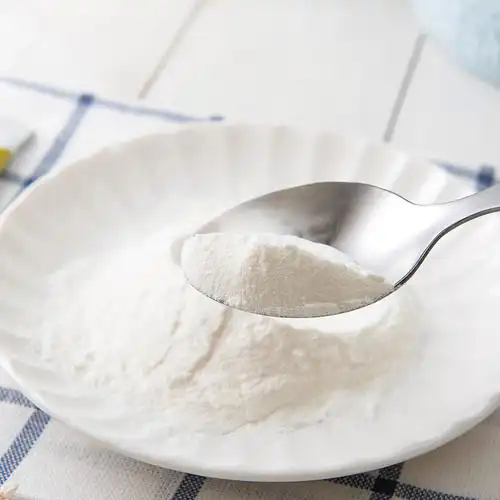
NEWS
The Comprehensive Guide to Hydrolyzed Vegetable Protein Manufacturing Process
2024-12-20
Hydrolyzed Vegetable Protein (HVP) has become an essential ingredient in numerous industries, particularly in food, beverages, sports nutrition, and animal feed. The unique hydrolyzed vegetable protein manufacturing process is what gives it its exceptional properties—such as enhanced digestibility, solubility, and flavor enhancement. In this guide, we'll explore the detailed process of producing hydrolyzed vegetable protein, its benefits, and how this ingredient is transforming various industries.
Understanding Hydrolyzed Vegetable Protein (HVP)
Before diving into the manufacturing process, it's essential to understand what hydrolyzed vegetable protein (HVP) is. HVP is a form of plant-based protein derived from various sources like soybeans, corn, and wheat. The term "hydrolyzed" refers to the process of breaking down the protein molecules into smaller peptides and amino acids using water, heat, or enzymes. This makes the protein easier to digest and enhances its absorption in the body.
Expanded Keywords:
- Plant protein hydrolysis
- Hydrolyzed protein properties
- Amino acid profile of HVP
The hydrolysis process not only improves protein digestibility but also gives HVP its characteristic umami flavor, making it a popular flavor enhancer in food products. It is also prized for being a low allergen and highly sustainable protein source.
The Hydrolyzed Vegetable Protein Manufacturing Process
The process of manufacturing HVP involves several key stages that transform raw plant material into the easily digestible protein powder used in a variety of products. Below is a step-by-step breakdown of this process.
1. Selection of Raw Materials
The first step in the HVP production process is selecting high-quality raw materials. Common sources include:
- Soybeans: A highly versatile and protein-rich source.
- Wheat: Provides a good balance of essential amino acids.
- Corn: Often used for its high protein yield and cost-effectiveness.
The choice of raw material impacts the final flavor profile and amino acid composition of the HVP.
| Raw Material | Protein Content | Amino Acids Profile | Common Uses |
|---|---|---|---|
| Soybeans | 35-40% | Leucine, Isoleucine | Vegan protein, flavor enhancement |
| Wheat | 10-15% | Glutamine, Lysine | Meat substitutes, snacks |
| Corn | 7-10% | Arginine, Serine | Soups, sauces, animal feed |
2. Extraction and Preparation of Protein
Once the raw materials are selected, the next step is to extract the protein from them. This typically involves separating the protein-rich fraction from the other components, like carbohydrates and fats, in a process called protein extraction. Depending on the source, different methods are employed:
- Soy Protein Extraction: Soybeans are cleaned, roasted, and then processed to extract the protein.
- Wheat Protein Extraction: Wheat is milled to isolate gluten, which is then purified for protein content.
Once extracted, the protein is prepared for the hydrolysis stage, often through grinding or fine-tuning to improve its solubility.
3. Hydrolysis Process: Breaking Down the Protein
The core of the HVP manufacturing process is the hydrolysis step, which involves breaking down the protein molecules into smaller peptides and amino acids. There are two primary methods used:
- Enzymatic Hydrolysis: Enzymes are used to break down the protein into smaller components. This method is more precise, and the resulting protein is of higher quality and easier to digest.
- Acid Hydrolysis: In this method, an acid, such as hydrochloric acid, is used to break the proteins down. While this process is cheaper and faster, it can produce a slightly more bitter taste.
| Hydrolysis Method | Advantages | Disadvantages |
|---|---|---|
| Enzymatic | High-quality protein, better digestibility | Slower, more expensive |
| Acidic | Faster, cost-effective | May alter flavor, higher risk of bitterness |
4. Neutralization and Filtration
After the hydrolysis process, the mixture is usually acidic or basic, depending on the hydrolysis method used. In this stage, neutralization is performed to balance the pH levels, making it safe for consumption. Filtration is also used to remove any unwanted by-products or residual acids that could affect the quality of the protein.
5. Drying and Powder Formation
Once neutralized and filtered, the hydrolyzed protein is then dried to form a fine powder. There are two common drying methods used:
- Spray Drying: This method involves spraying the liquid protein mixture into a hot air chamber, rapidly drying it into fine powder.
- Freeze Drying: Freeze drying preserves the nutritional profile by freezing the protein mixture and then slowly removing the water content under vacuum.
The drying process is critical as it impacts the final texture and solubility of the protein powder.
Benefits of Hydrolyzed Vegetable Protein
Hydrolyzed vegetable protein offers several distinct benefits, making it an attractive choice for manufacturers and consumers alike.
1. Improved Digestibility and Absorption
One of the key advantages of hydrolyzed vegetable protein is that it is easily digestible. The hydrolysis process breaks down protein into smaller peptides and amino acids, which the body can absorb more efficiently compared to whole proteins.
- High Bioavailability: The smaller size of peptides allows for faster absorption, making it an excellent choice for those with compromised digestive systems or for post-workout recovery.
- Rapid Amino Acid Delivery: Hydrolyzed proteins provide the necessary building blocks for muscle recovery and overall body repair.
Related Keywords:
- Protein absorption
- Bioavailable protein
- Digestive health benefits
2. Flavor Enhancement
Thanks to its umami properties, hydrolyzed vegetable protein is frequently used as a flavor enhancer in foods. It improves the savory taste of products without the need for excessive salt or artificial additives.
| Product Type | HVP Application | Benefit |
|---|---|---|
| Soups & Sauces | Adds savory taste without salt | Reduces sodium, boosts flavor |
| Vegetarian Foods | Enhances the meaty flavor | Mimics the taste of animal-based proteins |
| Processed Snacks | Increases palatability and texture | Boosts flavor and mouthfeel |
3. Sustainability and Ethical Benefits
Hydrolyzed vegetable protein is also a sustainable and ethically sourced protein. Unlike animal-based proteins, plant-based proteins require fewer resources (land, water, energy) to produce, making HVP an environmentally friendly choice.
- Vegan and Vegetarian-Friendly: HVP offers a clean, plant-based alternative to animal proteins.
- Reduced Environmental Impact: With lower greenhouse gas emissions and less water consumption, HVP production is more sustainable compared to animal farming.
Expanded Keywords:
- Sustainable protein production
- Plant-based protein sustainability
- Ethical sourcing of protein
Applications of Hydrolyzed Vegetable Protein
Hydrolyzed vegetable protein has wide-ranging applications across several industries, including:
1. Food and Beverages
HVP is commonly used in savory food products, soups, sauces, and processed snacks due to its ability to enhance flavor and mimic the taste of meat. It is also a key ingredient in meat alternatives, providing a rich, savory profile.
2. Sports Nutrition
HVP's high digestibility and amino acid content make it an excellent addition to sports nutrition supplements. Athletes use HVP to support muscle recovery and growth after intense workouts.
3. Animal Feed
In the animal feed industry, HVP is used to provide high-quality protein to livestock, poultry, and fish, ensuring better growth and healthier animals.
4. Cosmetics and Personal Care
Some cosmetic brands also utilize hydrolyzed vegetable protein in hair care and skin products due to its ability to strengthen hair and improve skin elasticity.
Conclusion
The hydrolyzed vegetable protein manufacturing process is a sophisticated yet essential procedure that produces a high-quality, digestible, and versatile ingredient. With applications ranging from food flavoring to animal feed, HVP is rapidly becoming a crucial component in various industries. Its nutritional, ethical, and sustainable properties further cement its place as a leading choice for consumers and manufacturers alike. Whether you're a food manufacturer or an athlete looking for high-quality plant protein, hydrolyzed vegetable protein offers significant benefits that can enhance both product quality and consumer experience.

